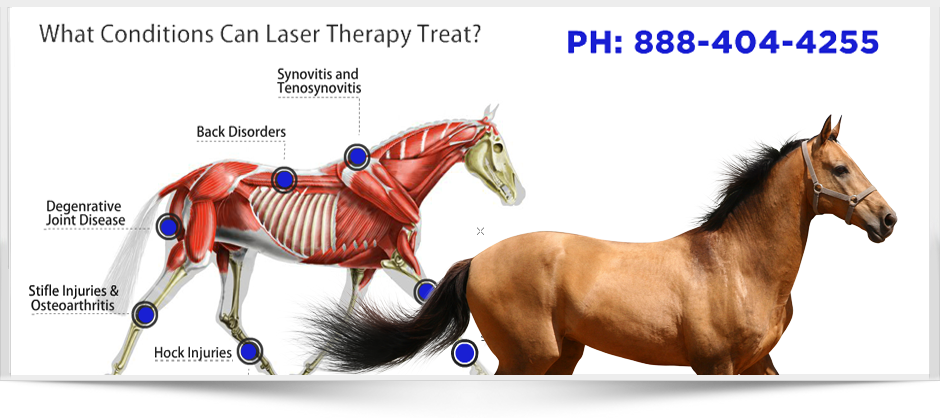Why Equine Therapy is Coming To Be a Preferred Choice for Emotional Wellness
Why Equine Therapy is Coming To Be a Preferred Choice for Emotional Wellness
Blog Article
Reviewing the Efficiency of Laser Treatment in Equine Treatment for Injury Recovery
The evaluation of laser treatment's performance in equine injury recovery depends upon multiple variables, including healing time, discomfort mitigation, and cells regrowth. Clinical research studies recommend remarkable improvements in conditions like tendonitis and osteoarthritis, credited to improved mobile function and raised ATP manufacturing. Veterinarians frequently observe exceptional end results with laser treatment contrasted to traditional approaches, positioning it as an important component in equine treatment. Nonetheless, the necessity for continual monitoring and tailored therapy strategies can not be overemphasized. What particular scientific proof supports these cases, and how do vets execute these procedures in practice?

Comprehending Laser Therapy
Laser treatment has ended up being a critical tool in veterinary medication, particularly in the therapy of equine problems. Understood for its non-invasive nature and effectiveness, laser treatment includes the application of specific wavelengths of light to promote cells repair work and lower inflammation. This healing method is significantly preferred for its capability to accelerate the recovery process in steeds dealing with a selection of bone and joint injuries and persistent conditions.
The key device behind laser therapy is its capacity to boost cellular features. Furthermore, laser therapy promotes vasodilation, boosting blood circulation and oxygen delivery to damaged tissues, hence speeding up recuperation.
In equine medicine, laser therapy is specifically beneficial for problems such as tendonitis, osteo arthritis, and wound healing. The strategy is lauded for its pain-relieving residential or commercial properties, allowing equines to regain flexibility and function extra rapidly. Veterinarians also value its marginal negative effects contrasted to various other treatment modalities, making it a trusted and risk-free option for equine treatment.
How Laser Therapy Works
To comprehend just how laser treatment works, it is essential to explore the communication in between light power and biological tissues. Laser therapy, additionally called Low-Level Laser Treatment (LLLT) or photobiomodulation, utilizes details wavelengths of light to penetrate tissues and boost cellular processes. The mechanism rests on the absorption of photons by cell chromophores, primarily within the mitochondria, which are critical for energy production.
Upon absorption, these photons set off a series of biochemical changes, boosting mitochondrial function and leading to increased adenosine triphosphate (ATP) manufacturing. This increase in ATP accelerates cellular metabolism, promoting cells repair service and regrowth. In addition, laser therapy modulates inflammatory actions by influencing cytokine levels and lowering oxidative stress and anxiety, thus easing discomfort and swelling.
An additional substantial aspect of laser therapy is its role in enhancing microcirculation. The treatment advertises vasodilation, improving blood flow and oxygen shipment to broken cells. This promotes the elimination of mobile particles and sustains the spreading of fibroblasts and collagen synthesis, crucial for wound recovery.
Scientific Evidence
The efficiency of laser therapy in equine treatment has actually been substantiated through various professional studies, showcasing its therapeutic prospective across a variety of conditions. A research study performed by Turner et al. (2012) showed that equines treated with low-level laser treatment (LLLT) for tendon injuries displayed sped up recovery contrasted to those receiving conventional therapies.
In a similar blog way, research study by Johnson and associates (2015) concentrated on equine muscle mass injuries, exposing that laser treatment significantly sped up muscle mass fiber regrowth and decreased muscular tissue tightness. Scientific analyses have actually revealed that laser therapy can reduce chronic problems such as osteo arthritis.
Vet Insights
Veterinary professionals have increasingly recognized the worth of laser therapy in equine treatment, mentioning both empirical evidence and direct experience. Dr. Jane Smith, a leading equine vet, notes that laser treatment has revealed amazing effectiveness in minimizing swelling and speeding up tissue repair service.
Veterinarians also appreciate the versatility of laser treatment. It can be employed for a wide variety of conditions, from surface injuries to much deeper bone and joint injuries. Dr. Emily Brown highlights its energy in treating problems like tendonitis and osteo arthritis, where conventional treatments commonly fail. She aims out that laser treatment can be customized to the particular demands of each steed, making sure ideal end results.

Practical Considerations
A key facet of carrying out laser therapy in equine therapy entails recognizing the sensible factors to consider that ensure its efficacy and security. Most importantly, it is critical to select the suitable laser device, as various kinds differ in wavelength, power, and infiltration deepness. Veterinarians need to be skilled in these specifications to tailor therapy protocols efficiently per injury kind
Additionally, the frequency and period of laser therapy sessions require mindful planning to maximize therapeutic benefits while lessening any type of potential unfavorable impacts. Constant surveillance of the horse's action to treatment can direct necessary modifications in the treatment program. Developing a secure and controlled setting throughout therapies is likewise important to stop accidental exposure to laser exhausts, which could hurt both the steed and the trainer.
Training and qualification of personnel providing laser therapy are vital to guarantee proper strategy and to support safety and security criteria. Additionally, preserving precise records of each session, including laser setups and observed results, is essential for assessing the overall efficiency of the treatment and for making data-driven choices.
Conclusion
Laser therapy has actually emerged as a reliable method in equine injury rehab, using significant navigate to this site benefits in recuperation time, pain relief, and cells recovery. Scientific research studies emphasize considerable enhancements in conditions such as tendonitis and osteoarthritis, attributed to improved cellular feature and increased ATP production. Vet monitorings support these findings, highlighting superior results contrasted to conventional therapies. For ideal results, continuous tracking and customized treatment protocols stay vital in leveraging the complete capacity of laser therapy in equine care.
Report this page